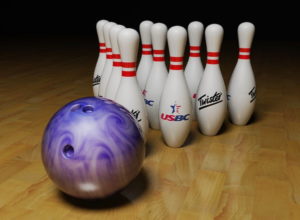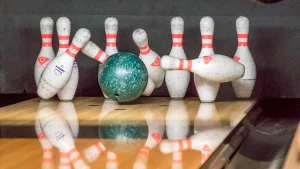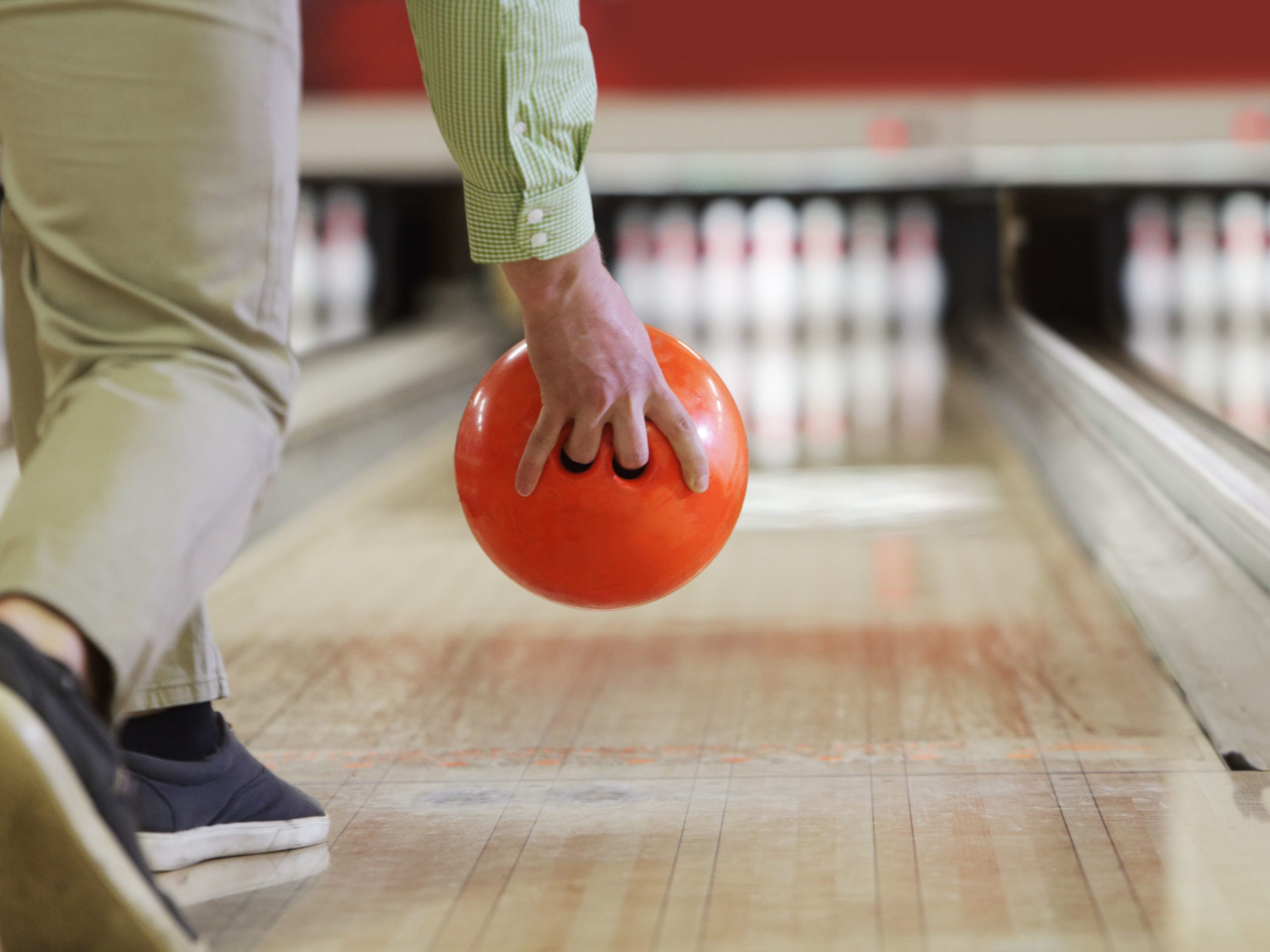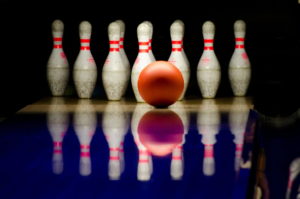Bowling may appear straightforward, but its rules encompass more than meets the eye. Launch the ball down the lane with precision and finesse, aiming to knock down as many pins as your skill allows. The points you accumulate will correspond to the number of pins successfully toppled. But what happens if you take down all the pins in one go or leave a few standing? This is where the difference between a strike and a spare comes into play.

Contents
A Strike: The Holy Grail of Bowling
A strike occurs when all ten pins are knocked down on the first throw. Considered an exceptional feat, it awards 10 points plus bonus points that are calculated in the subsequent frames. Since you managed to take down all the pins, it means no pins were left standing.
The maximum score one can achieve with strikes is 300, and this is a perfect game. The first strike of a game is referred to as the “X” symbol while successive strikes are known as double, triple (three strikes in a row), and so forth. Once you score a strike, the next two throws will be calculated as bonus points.
A Spare: The Nifty Second Place
A spare happens when all ten pins are knocked down by combining both throws in the frame. It is an excellent result since it means you managed to take down all the pins even though your first throw was not able to do so. A spare is symbolized by a “/” and earns 10 points plus bonus points for the next throw.
Strike vs Spare: What’s The Difference?
In the game of bowling, points are scored in a series of frames. A frame is essentially a “round” of bowling, where each player gets two opportunities to throw the ball.
Bowling is all about skillfully knocking down as many pins as possible with a single swing of the ball. The ultimate achievement is a strike, which happens when you successfully knock down all ten pins with one hit. So, if you can masterfully clear the entire lane with a single throw, you’ve earned yourself a strike.
If you successfully knock down almost all the pins but there’s still one standing, it’s not considered a strike. Don’t worry, though, because that’s why you get a second chance to bowl in the same frame. This is where the concept of a spare comes into play.
In bowling, a spare occurs when all the remaining pins are knocked down with the second ball. While it may not be as awe-inspiring as a strike, achieving a spare still earns you points and keeps you in the game. However, every bowler must understand the distinguishing characteristics between a strike and a spare.
Is A Spare The Same As A Strike?
In the realm of bowling, both a strike and a spare are coveted shots. The objective is to knock down as many pins as possible with as few rolls as possible. While a spare and a strike yield the same points, achieving a strike is considered more impressive.
From a technical standpoint, both a strike and a spare will earn you ten points, corresponding to the number of pins knocked down. However, there’s a twist – each frame consists of two shots, except for the tenth frame, which allows for a third shot if you achieve a strike or spare. If you manage to strike in this frame, you’ll be rewarded with bonus points.
In essence, the key to scoring more points in bowling is to minimize the number of shots taken while maximizing the number of pins hit. This is why achieving a strike is preferable to a spare, as a spare requires an additional shot compared to a strike. By adopting this strategy, you can enhance your overall performance and increase your chances of achieving higher scores.
Strike Bonus Points
Scoring bonus points in bowling is not limited to just the final tenth frame. When you achieve a strike, you are granted another opportunity to knock down pins, allowing for a potential of three shots in a single frame. This strategic advantage adds excitement and complexity to the game.
However, here’s the catch: not only will you earn 10 points for the initial strike, but you’ll also be granted double points on the next two rolls as a bonus reward.
Let’s take an example, imagine you throw a strike, followed by a 4 and then a 5. In this case, your total score would be 19 (10 pins from the strike plus the 4 and 5 from the other shots). Now, the score from the other two shots (9) is doubled thanks to the strike bonus, resulting in a total of 28 points for the player.
Although it may initially seem puzzling, the majority of bowling systems automatically handle the scoring process. To account for bonus points, you’ll need to wait until the scores from the next two shots are tallied up. Rest assured, the system will take care of it for you.
Is A Strike Worth More Than A Spare?
A strike holds greater value than a spare in bowling. This is due to the bonus point system that rewards additional points for strikes.
For instance, when you aim to knock down a spare in a frame (like hitting a 6 and a 4), the maximum score you can achieve is always 10 points.
When you achieve a strike, you will be rewarded with double the sum of the next two points combined. This implies that a strike will yield significantly more points compared to a spare.
This is further demonstrated by the additional shot provided in the tenth and final frame. If you manage to score a strike, you will be granted another opportunity to knock down pins, ultimately elevating your score to the coveted 300-point milestone, signifying the completion of the game.
How To Score A Spare
Scoring a spare in bowling can be a challenging task, influenced by factors such as your skill level, pin placement, and even a bit of luck. A spare is achieved by successfully knocking down all 10 pins using two shots. In essence, anyone has the potential to score a spare within their frames, as each frame allows for two shots to be taken.
For instance, let’s say you knock down only 3 pins in your first shot, but then manage to knock down 7 pins in your next shot. This would give you a total of ten pins. However, the special bonus that comes with a spare means that you’ll receive double points from the second shot. In this case, that would be another 7 pins, making the spare worth a total of 17 points.
For instance, imagine you knock down 5 pins in your first shot, followed by another 5 pins in your second shot. This combination totals 15 points (summing up both shots and doubling the spare bonus of the second shot).
Experienced bowlers sometimes employ a strategy of intentionally aiming for a lower score on their first attempt, only to then complete the spare by knocking down the remaining pins. While not as effective as aiming for a strike, this approach helps accumulate points. For instance, finishing a spare with 9 pins left yields more points than finishing with just 4 pins left on the second shot. By employing this tactic, bowlers can maximize their scores and improve their overall performance.
Scoring a spare in bowling can vary from person to person. It ultimately boils down to honing your skills through practice and finding the approach that works best for you. Additionally, utilizing aids such as bumpers or a ramp can increase your chances of scoring a spare. Keep experimenting and refining your technique to maximize your success on the lanes.
How To Score A Strike
As previously mentioned, a strike is achieved when all ten pins are knocked down by a single hit. Not only does the player earn 10 points for the strike, but they also receive double the points from the next two hits. This scoring system adds an exciting element to the game, rewarding skill and precision.
For instance, when you achieve a strike in your third frame, the points scored in frames four and five will be doubled.
This implies that consecutive scores result in the figure being continuously doubled. The greater the number of strikes, the higher your point tally!
Although rare, skilled and fortunate players can achieve the remarkable feat of hitting 12 consecutive strikes – nine strikes for each frame and an additional three for the final frame – resulting in a maximum score of 300 points.
Marking A Strike And A Spare
In modern bowling alleys, automated scoring screens have become the norm. However, if you find yourself keeping score manually, there’s a simple method to denote a strike or a spare without the need for written annotations.
A strike is indicated by placing an ‘X’ in the corresponding frame box. The subsequent bonuses are calculated by adding up the scores of the next two shots.
To indicate a spare, simply place a ‘/’ mark in the corresponding box. The bonus is calculated at the end of the frame, where the second score is added to the spare score of 10.
Open Frame Scoring
Open frame scoring occurs when a player fails to knock down all 10 pins. Instead, they knock down anywhere between 0 and 9 pins with their two shots in a frame. The player is then awarded points based on the total number of pins they successfully knocked down.
In this scenario, suppose a player knocks down 5 pins in the first shot and 4 pins in the second shot. As a result, they would earn a total of 9 points for that frame. Since there is still one pin remaining, this does not qualify as a spare, and therefore, no additional bonuses are awarded.
An open frame in bowling is often considered the least favorable score, as it limits the maximum points to 9. In some unfortunate cases, you may even end up with a score of zero, putting you at a disadvantage compared to other players.s. However, it is still possible to win a game of bowling with mostly open frame scores, provided you consistently knock down 9 pins per frame.
Conclusion
As you can see, there are significant differences between a strike and a spare in bowling. While both may seem like simple outcomes to achieve, they require different techniques and approaches. A strike means knocking down all the pins with your first roll, while a spare means knocking down the remaining pins on your second roll.
But these differences go beyond just scoring points – they also impact players’ strategies and mindsets. A strike is often seen as a more desirable outcome, as it immediately awards 10 points and sets you up for a potential turkey (three strikes in a row). On the other hand, spares require more precision and strategic thinking, as they may be necessary to keep your score high or maintain momentum.
It’s also worth noting that while strikes are typically more difficult to achieve, they can also be more rewarding in terms of points. Depending on the rules of a specific game or competition, strikes may award additional bonus points that spares do not.
In addition, both strikes and spares play a role in the overall strategy and scoring of a game. For example, some players may focus on consistently achieving spares throughout the game, while others may aim for more strikes and take a riskier approach. Ultimately, it is up to each player to decide which technique works best for them based on their skills and playing style.
Overall, understanding the differences between strikes and spares in bowling can help players improve their game and make more informed decisions on the lanes. So next time you hit the bowling alley, remember the techniques and strategies for both strikes and spares and watch as your scores improve.


Allow me to introduce myself – I’m Eric Wilkinson, a true bowling aficionado. The world of bowling culture has always fascinated me, and I’ve made the exciting decision to share my passion through writing. As I embark on this blogging adventure, my goal is to provide fellow enthusiasts with valuable insights, tips, and captivating stories. Through my blog, I hope to ignite a deeper appreciation for the sport and foster a sense of community among fellow bowlers. Join me on this thrilling journey as we explore the vibrant world of bowling together.

